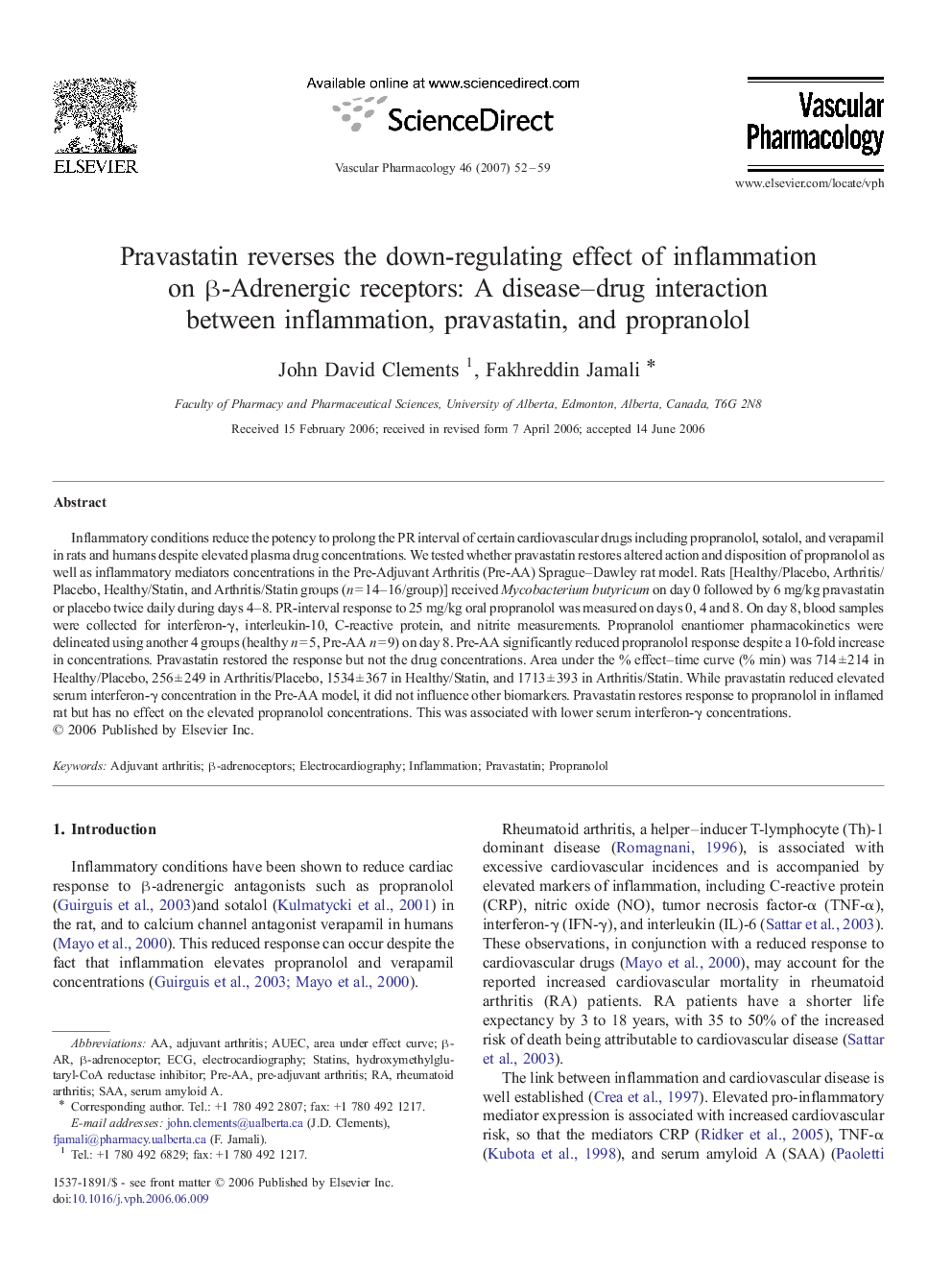| Article ID | Journal | Published Year | Pages | File Type |
|---|---|---|---|---|
| 2574640 | Vascular Pharmacology | 2007 | 8 Pages |
Inflammatory conditions reduce the potency to prolong the PR interval of certain cardiovascular drugs including propranolol, sotalol, and verapamil in rats and humans despite elevated plasma drug concentrations. We tested whether pravastatin restores altered action and disposition of propranolol as well as inflammatory mediators concentrations in the Pre-Adjuvant Arthritis (Pre-AA) Sprague–Dawley rat model. Rats [Healthy/Placebo, Arthritis/Placebo, Healthy/Statin, and Arthritis/Statin groups (n = 14–16/group)] received Mycobacterium butyricum on day 0 followed by 6 mg/kg pravastatin or placebo twice daily during days 4–8. PR-interval response to 25 mg/kg oral propranolol was measured on days 0, 4 and 8. On day 8, blood samples were collected for interferon-γ, interleukin-10, C-reactive protein, and nitrite measurements. Propranolol enantiomer pharmacokinetics were delineated using another 4 groups (healthy n = 5, Pre-AA n = 9) on day 8. Pre-AA significantly reduced propranolol response despite a 10-fold increase in concentrations. Pravastatin restored the response but not the drug concentrations. Area under the % effect–time curve (% min) was 714 ± 214 in Healthy/Placebo, 256 ± 249 in Arthritis/Placebo, 1534 ± 367 in Healthy/Statin, and 1713 ± 393 in Arthritis/Statin. While pravastatin reduced elevated serum interferon-γ concentration in the Pre-AA model, it did not influence other biomarkers. Pravastatin restores response to propranolol in inflamed rat but has no effect on the elevated propranolol concentrations. This was associated with lower serum interferon-γ concentrations.
